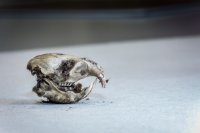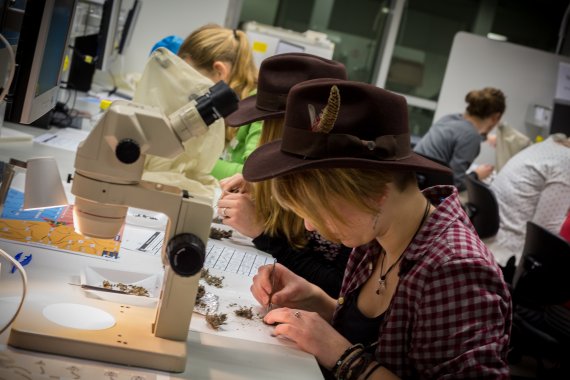Owls have some pretty extraordinary eating habits. The predators swallow their prey, mostly mice, whole. The indigestible parts are not excreted but stay in the stomach, explains Daan Drukker of the BOA (Biology Outdoor Association), which organized this event. ‘Eventually the owl pukes up a slimy ball of hairs, feathers and bones. And voilà, an owl pellet. We take the bones out of the dried up pellet and we can see exactly what the owl has eaten.’
SKULL
For this evening the delightful little lumps are laid out on plastic plates waiting to be sifted through. The atmosphere is relaxed. Biology students come to this event out of interest, mainly. But taking owl pellets apart is not as easy as you might think. The bones are fragile, so it takes a steady hand and concentration to extract them from the tangle of hairs and feathers. But the reward is great when a complete skull emerges from the ball. All the bones that are found may be taken home. Then the patient student faces a new challenge. Reconstructing a whole skeleton from the bones.

IDENTIFYING MICE
‘But that is not the only reason we do this,’ says Rens de Boer, who is involved in the organization as well. ‘We record the animal species we find on waarnemingen.nl [a site for recording nature observations, ed.]. We also record where today’s owl pellets came from. That provides valuable information. Not so much about the owl itself as about the distribution of mouse species in Wageningen and other parts of the country. Because it is hard for people to spot mice in the wild. Luckily for us, it’s not so hard for the owl.’

